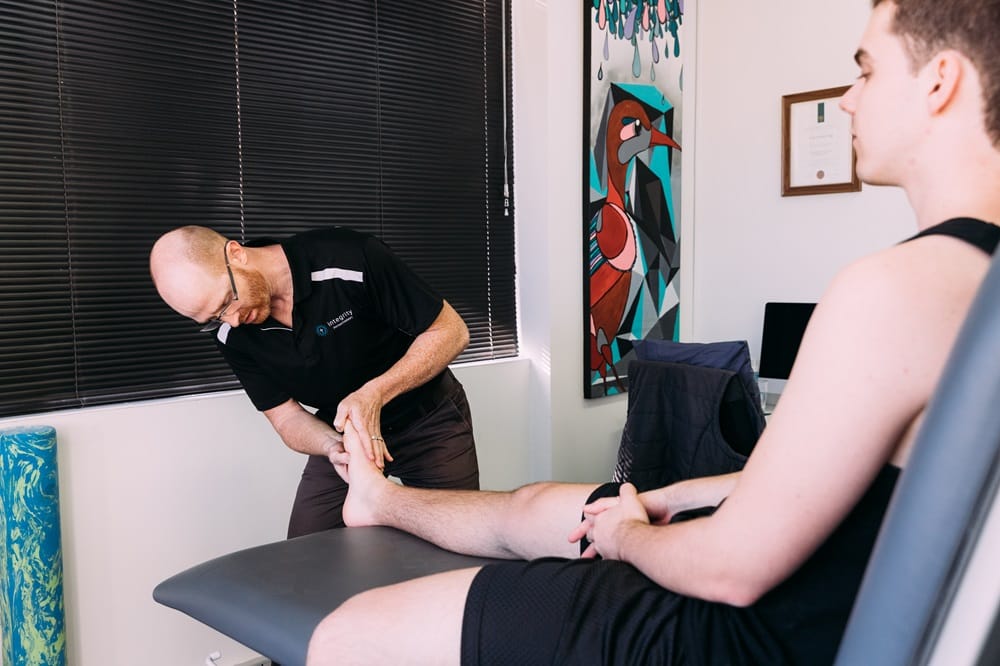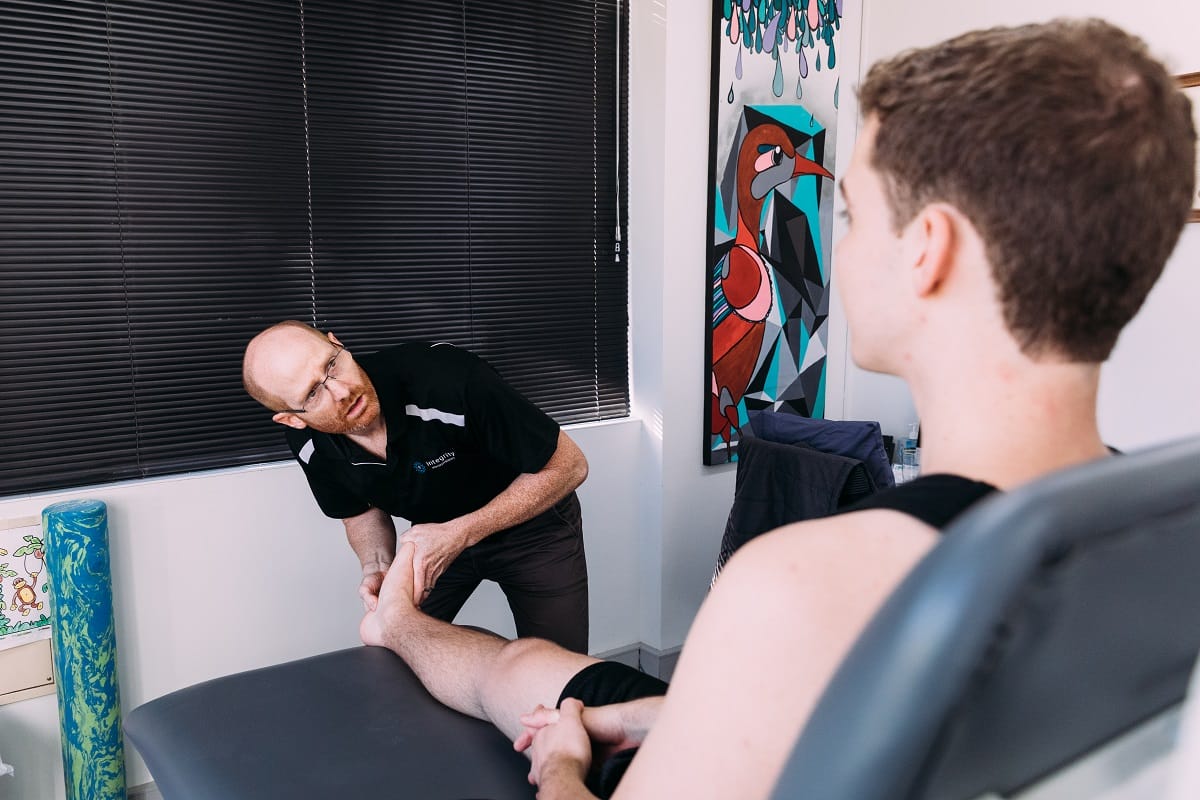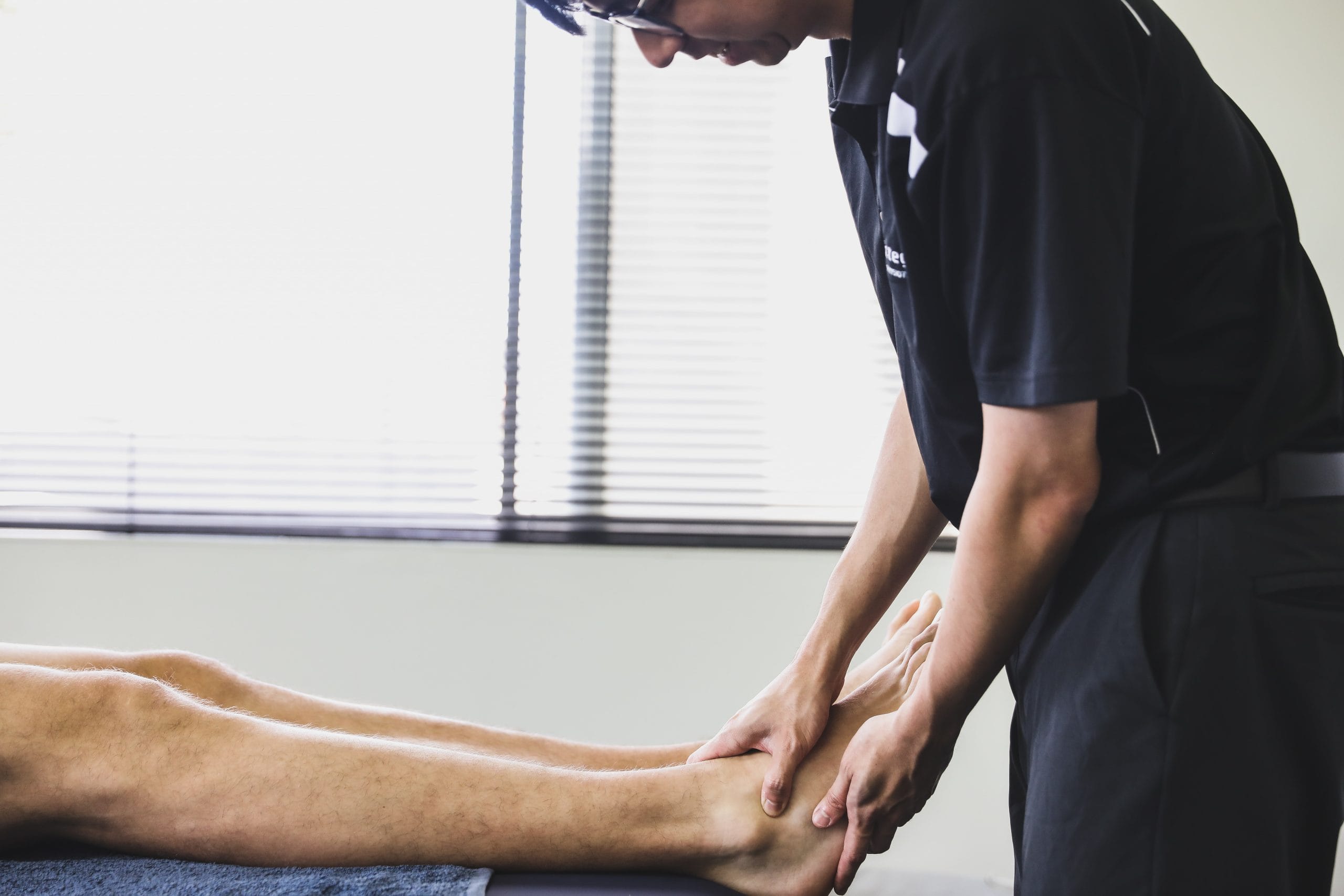
Plantar fasciitis is a common issue that many people face, significantly affecting their daily lives and overall quality of life. In Australia alone, it’s estimated that around 310,000 healthcare encounters annually involve the management of plantar fasciitis.
Luckily, stretching can be a highly effective method of managing and preventing the discomfort associated with this condition.
Whether you’re currently dealing with plantar fasciitis or looking to prevent it, we’re going to share some of our favourite stretches to help you take control of your foot health and get back on your feet pain-free.
Understanding plantar fasciitis
What is plantar fasciitis?
Plantar fasciitis, also known as policeman’s heel, is a common condition that causes heel pain due to inflammation or sensitisation of the plantar fascia, a thick band of tissue that runs along the bottom of your foot and connects your heel bone to your toes.
This inflammation or sensitisation results in stabbing pain, often most intense with your first steps in the morning. As you move, the pain may subside but can return after long periods of standing or after rising from a seated position.
Learn more about plantar fasciitis.
Common causes and risk factors
- Overuse or repetitive strain, often from running or walking
- Wearing unsupportive footwear, such as flip-flops / thongs or high heels
- High-impact activities that put stress on the heel
- Obesity or sudden weight gain
- Having flat feet or high arches
- Occupations that require prolonged standing or walking particularly on hard ground
Symptoms and diagnosis
- Sharp, stabbing pain in the heel
- Pain that lessens with activity but returns after periods of inactivity
- Increased pain after exercise (but not during the activity itself)
- Tenderness and stiffness in the heel
- Difficulty pointing toes or bending the foot
Before we tackle the stretches that we recommend for plantar fasciitis, it’s important to understand the underlying causes and symptoms of this condition. Knowing what contributes to plantar fasciitis and recognising its signs can help you manage the pain more effectively and prevent further issues.

Top stretches for plantar fasciitis
1. Plantar fasciitis stretch
As the name suggests, this stretch targets the plantar fascia directly, helping to reduce inflammation and pain.
- Sit on a chair and cross one foot over the opposite knee.
- Hold the toes of the crossed foot and gently pull them towards you.
- Hold for 15-30 seconds.
- Repeat 2-3 times, then switch feet.
Key points
- Use a towel or strap if you have trouble reaching your toes.
- Keep the movement gentle to avoid aggravating the condition.
2. Calf stretch
The calf stretch is an effective stretch that can help alleviate tension in the calf muscles, which can reduce stress on the plantar fascia.
- Stand facing a wall with your hands on the wall at shoulder height.
- Step one foot back, keeping it straight with the heel on the ground.
- Bend the front knee and lean forward.
- Hold for 20-30 seconds, then switch legs.
Key points
- Keep your back leg straight and heel on the ground.
- Make sure the front knee is directly over the ankle.
3. Toe stretch
Another stretch that we recommend is the toe stretch, which can help improve flexibility in the toes and the plantar fascia.
- Sit on the floor with your legs straight in front of you.
- Loop a towel around the ball of your foot and gently pull the towel towards you while keeping the leg straight.
- Hold for 20-30 seconds, then switch feet.
Key points
- Keep your back straight and avoid rounding your shoulders.
- Pull the towel gently to feel a stretch without pain.
4. Achilles tendon stretch
The achilles tendon stretch is beneficial for improving the flexibility of the achilles tendon, which can help reduce stress on the plantar fascia.
- Stand on a step with your heels hanging off the edge.
- Slowly lower your heels down, feeling a stretch in the Achilles tendon and calf muscles.
- Hold for 15-30 seconds, then raise your heels back up.
- Repeat 2-3 times.
Key points
- If you’re struggling with balance, try and find a handrail or wall to perform this stretch.
- Lower your heels slowly to avoid straining the tendons.
5. Foot roll
The foot roll helps to massage and stretch the plantar fascia, providing relief from tension and improving flexibility.
- Sit in a chair and place a tennis ball or a frozen water bottle under your foot.
- Roll your foot back and forth over the ball or bottle, applying gentle pressure.
- Continue for 2-3 minutes, then switch feet.
Key points
- Start with gentle pressure and gradually increase as tolerated.
- Use a frozen water bottle for an added cooling effect to reduce inflammation.
Read more about using a spikey ball for plantar fasciitis.
When to seek professional help
While stretching is essential for managing and preventing plantar fasciitis, it’s important to exercise caution to avoid worsening the condition. If you’re experiencing any of the following problems, it may be time to seek help from a physiotherapist:
- Severe pain
- Lack of improvement
- Recurring issues
- Difficulty performing stretches
- Increased pain or swelling
- Bruising
Start your journey to finding pain relief
Here at our South Perth Physio Clinic, we can provide you with a personalised plantar fasciitis physio treatment plan that addresses your specific needs, combines stretches with other therapies, monitors your progress, and helps prevent future episodes.
If you’re experiencing persistent pain or have concerns, don’t hesitate to reach out for a comprehensive evaluation and tailored treatment plan.
Book an appointment today and take the first step towards a pain-free life.



